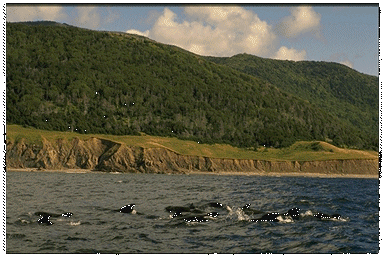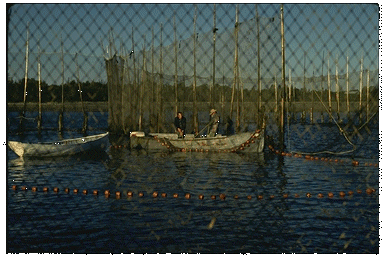
TIDES AND TRAILS
On the coast, a water world where fog often shrouds the shore and the mist hangs cold and damp from the sharp-pointed spruce; inland, a tranquil world of sun-dappled forests, hidden waterfalls, secluded glens and eternal barrens.

A rolling plateau, a remnant of the ancient Caledonia Highlands, distinguishes this
region. Averaging more than 300 metres above sea level, the plateau is cut by deep
valleys and cascading rivers.
Scoured by the giant tides of the Bay of Fundy and pounded by Atlantic swells, this
region meets the sea with drama and conflict. The Fundy shore alternates between
tide-scoured cliffs of sedimentary rock and extensive mud flats and salt marshes.
Around Cape Breton Island, the land abruptly ends in a series of bold headlands and
steep-sided river valleys pouring into coves and inlets.

A narrow coastal strip 3-30 kilometres wide, backed by steeply rising uplands, supports
a forest dominated by red spruce on the New Brunswick side of the Bay and by white
spruce on the Nova Scotia shore. Inland, shady forests of white and yellow birch,
American beech and sugar maple, carpeted with a lush understory of ferns, provide a
restful contrast to the dense, damp evergreen forests. Hemlock, red maple, white
birch, red spruce and white pine are found at lower elevations. In the Cape Breton
Island portion of the region, extensive "barrens," waist-high with Labrador tea and
broken by pink granite outcroppings and patches of light green lichens, cover the
upland plateau . Almost the entire region has been logged, some of it several times.

WILDLIFE:
Large mammals found in this region include white-tailed deer, moose, red fox, black bear, raccoon, bobcat, coyote, mink, otter, muskrat and beaver. Wolf and caribou once roamed this region, but disappeared early in the twentieth century.
The salt marshes and tidal mud flats provide critical feeding and staging areas for myriads of shorebirds and waterfowl. Millions of semi-palmated sandpipers blacken beaches and mud flats in late summer to "re-fuel" for the long non-stop flight to South America. The Tantramarre marshes at the head of the Bay of Fundy are renowned for the vast numbers of waterfowl, particularly Canada geese, that gather here to feed in the rich salt marshes. The term "tantramarre" may be derived from an Acadian word referring to the racket made by the birds. Much of the extensive salt marshes have long been diked, drained and transformed into hay fields.

STATUS OF NATIONAL PARKS SYSTEM:
Two national parks represent this region, Cape Breton Highlands (951 km2) and Fundy (206 km2), established by federal-provincial agreements in 1936 and 1948 respectively. Fundy has two faces: the coast where tides alternately expose and submerge a damp ribbon of mudflats, salt marshes and tidal pools - an area not part of the land yet not entirely belonging to the sea; and the inland face, the Fundy of shady forests and tumbling streams. This park is characteristic of the rugged Bay of Fundy coast and the Caledonia Highlands of southern New Brunswick. The park has a long history of human use; most of it has been logged in the past, and many old fields remain from small farms. The pine martin, considered rare in Canada, and a breeding population of peregrine falcons, an endangered species, have been reintroduced into the park.
The scenic Cabot Trail, the best-known feature of Cape Breton Highlands National Park, hugs the coast, providing breathtaking views of the restless Gulf of St. Lawrence. Trails lead through a variety of habitats typical of this natural region - from lush hardwood forests carpeted with ferns, through boreal forests of spruce and fir and bogs dotted with orchids, to sub-arctic barrens and muskeg. The rock vole, Gaspé shrew, pygmy shrew and pine martin, all considered rare in Canada, occur in the park.